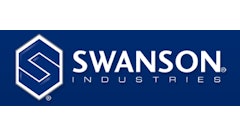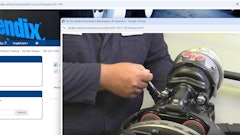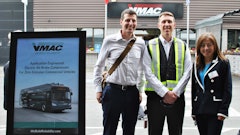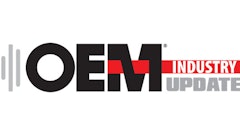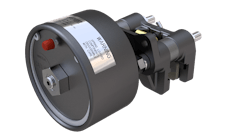
responses submitted by Fred Andersky, Director of Customer Solutions, Controls Group, Bendix Commercial Vehicle Systems LLC, and Richard Beyer is Vice President Engineering and Research & Development for Bendix Commercial Vehicle Systems LLC
Automation & Smart Systems
What smart systems or components does your company currently offer? If they are application or industry specific, include that detail in the explanation.
FA: Depends on your concept of “smart systems.” If we’re talking level 4 or 5 we don’t offer anything. Our systems are currently level 1 and moving to level 2 when steering control is integrated with the braking system.
How will that portfolio be expanding in the near future? What customer/industry demands drove these future developments?
FA: Adding steering to work with braking (system fusion). More advanced sensors, external inputs, evolution of euro electronic braking system with NA air brake system to create a single global approach that becomes the foundation for more automated systems. Demands are being driven by both OEM customers looking for cost savings and systems that can provide a stronger foundation for increasing automation and reduced weight. Fleets are looking for savings as well, but also increasing productivity of the vehicle and the driver.
How do you see the timeline of vehicle automation unfolding in the coming years?
FA: We get to autonomous vehicles by building and advancing driver safety technologies through increasing data, sensor and system fusion which will deliver increasingly automated applications. This steppingstone approach to automated evolution will deliver proven performance, as well as increasing driver acceptance, leading to the point where autonomous vehicles will be a natural next step.
Where do you see the greatest opportunity for automation, either on board or in the manufacturing process?
FA: Both. Automation on board improves safety and productivity - helping drive down costs, strengthen vehicle and system performance, and improve worker experience. In manufacturing it means more rapid evolution of products, higher quality levels and lower costs.
Managing the Data Trend
Since the onset of Big Data several years ago, how has data become an integrated part of your design and development process?
FA: Performance Information from existing systems, as well as prototype testing data, helps drive new features, updates to existing and new products.
What challenges remain or lay ahead for the continued and accelerated flow of data?
FA: Cyber security is the biggest challenge. As we look at more information coming into advanced driver assistance systems from outside sources, such as V2X, GPS, Prognostic and Diagnostic, electronic inspections, tolling, etc.it will be more critical to ensure that that information is not corrupted which could lead to gateways that can corrupt the system with results ranging from performance issues on the truck to more dangerous situations such as takeover of the vehicle by outsiders.
Diesel vs. Electric
Do you think there will always be a place for diesel powered equipment for heavy-duty applications? Why or why not?
RB: Some applications – especially where the electrical infrastructure is difficult to have or in extreme heavy haul applications – will remain more conventional powertrains (e.g. diesel, CNG, LNG etc.) In particular, a heavy haul application is an issue due to both the power requirement as well as the duration of that required power when it comes to moving a typical load. Electric powertrains can be effective for local and regional hauling for volume and conventional loads, but at the extreme end it will be difficult to justify these specialty configurations. Total Lower Cost of Ownership – or TCO – in addition to regulatory drivers (e.g. CO2 regulations, limitations of diesel used in cities, etc.) will drive the decision on the long term for which type of power a truck will have.
What would electric power sources have to achieve in order to replace the diesel engine for heavy-duty applications?
RB: A major consideration is that electric powertrains must have a reasonable range to be able to bridge the distances to the “infrastructure” to recharge the battery packs. The charge times as well will need to be reasonable to enable normal operation. For example, charge times should be able to be completed during driver breaks or meal times, or have in place a level of automation where this is not an issue, in order to avoid disruption of vehicle and business operations.
How do the diesel bans in several major cities around the world play into the direction your company is taking for electric vehicle development, if at all?
For certain types of intercity applications it is moving the adaptation to e-mobility drivetrain types at a much faster rate. This is a local and regional issue and will most likely affect the last few miles of the delivery stream for an overall logistics solution.
What do you think is the next step for emissions regulations after Tier 4 Final and Stage V?
CO2 output is critical. Efficiency and helping to reduce the influences of the cause of global warming will become more significant. There will be improvements in efficiency, in general, for transportation technology. Many of the technologies will positively benefit conventional as well as e-mobility vehicle types (e.g. low rolling resistance tires, aerodynamics, etc.).
How are you looking at engine system design and development for the future? Modularity? More integrated sensors? More compact design? Etc.
There will be engine development in the future. Alternative fuels, better performance, and flexibility. The issue will be, as e-mobility takes hold, what is the speed of adoption and what does that mature future look like. That answer will define the real future development on conventional powertrains and engines.

![Sa P75 I Sahr[80]](https://img.oemoffhighway.com/mindful/acbm/workspaces/default/uploads/2025/10/sa-p75-isahr80.Cn3n79HB4H.jpg?auto=format%2Ccompress&fit=crop&h=100&q=70&w=100)
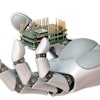
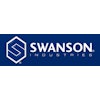
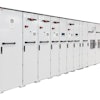
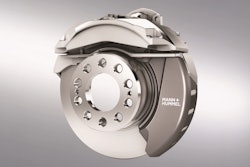
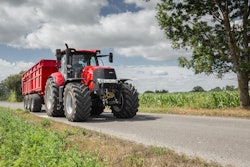

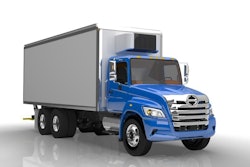
![Sa P75 I Sahr[80]](https://img.oemoffhighway.com/mindful/acbm/workspaces/default/uploads/2025/10/sa-p75-isahr80.Cn3n79HB4H.jpg?ar=16%3A9&auto=format%2Ccompress&fit=crop&h=135&q=70&w=240)

